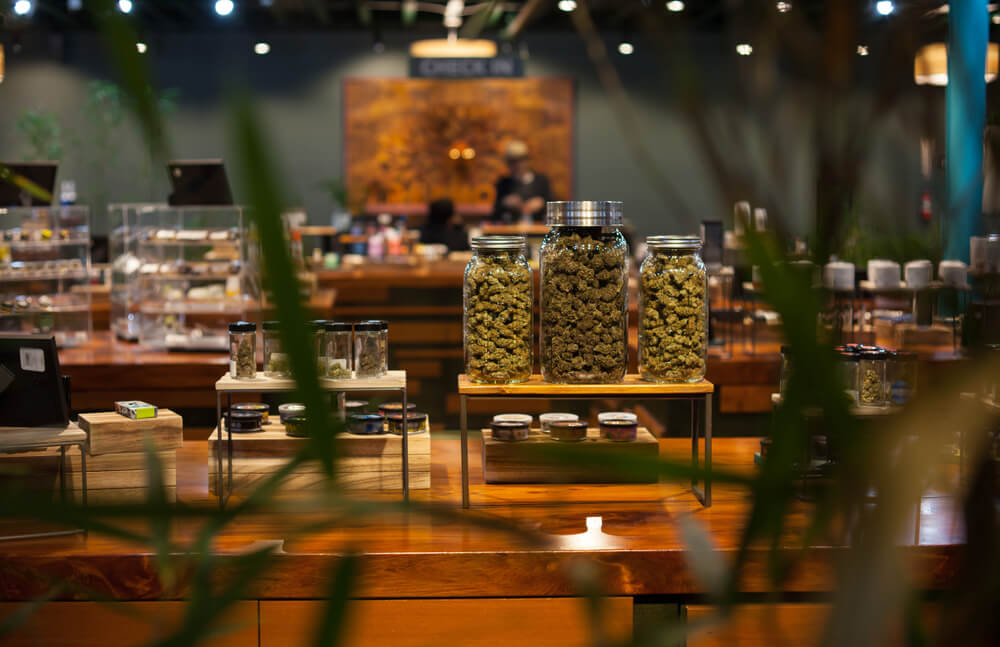 by NCIA’s Facilities Design Committee
by NCIA’s Facilities Design Committee
Jacques Santucci, Brian Anderson, David Vaillencourt, and David Dixon
Continuing our five-part series on the behind-the-scenes workings of the legal cannabis industry. This series focuses on all of the inner dealings and industry advice from established professionals to craft this unlimited How-to-Guide to assist you in setting up your own facility. These articles cover cultivation, extraction, infused products, and retail facilities as well as support activities. In general, remember to be compliant with all local rules and regulations and contact a licensed contractor and industry expert.
Part Four, Retail & Dispensaries: Top Things to Consider When Planning Your Cannabis Dispensary and Retail Operations
Retail and dispensary design presents challenges that are distinct from the other areas of cannabis production and manufacturing. The biggest difference is that the design must now account for customers as well as employees. Listed below are a number of issues that an operator should consider as they are in the process of designing their retail or dispensary operations. Always remember to be compliant with all local rules and regulations.
Security Camera: Minimum Area of Coverage
Most states require a hundred percent minimum security coverage in any area where marijuana products are stored, displayed, or sold. Designing a camera system and placements to avoid “dead spots’ ‘ (i.e. areas with no camera coverage) can be challenging, especially if the operation is taking over an existing space, as opposed to building a new facility from scratch.
Bonus Consideration: Think about having an HVAC system specially dedicated to your security room. Security rooms for video monitoring and storage can sometimes be an afterthought. But these locations should be treated more like computer server rooms as opposed to standard office space. And with the amount of technology placed in a (typically) small space, things can overheat rather quickly. This can lead to damage to the system and ultimately, you could be out of compliance for video storage and retention.
Another Bonus Consideration: do not forget about placing security cameras to cover the entrance and exit points to the parking lot. Think about the field of view around doors, especially if the door is near the corner of the building or if there are other obstructions that can block the camera’s view of the area. Multiple cameras may be needed for this critical function. Contact a licensed professional.
Security Camera: Minimum Data Storage
Video storage and retention requirements for cannabis facilities are fairly stringent. Typical requirements include 90-days of on-site storage and up to five years of off-site storage. Off-site data storage is required for future legal needs. Many states require a minimum video resolution of 1080p. The video storage needs for even a moderately sized facility can amount to petabytes of data. For this reason, many facilities outsource this function at least in some measure. If you do decide to handle this all yourself, you should be sure that you have the technical expertise on your staff to handle this potentially complex technical issue.
Security Alarm: Monitoring
Like it or not, retail cannabis facilities will probably always be targets for crime. Having a security system probably seems like a no-brainer. But simply having an alarm system isn’t typically enough. You will need a system that is actively monitored. This allows the company to initiate actions on your behalf depending on the alarm status (e.g., call the police or fire department in response to a remote alarm). Your alarm should be monitored by at least one reputable company. Redundancy might not be needed, but check to be sure that you are in compliance with local rules and regulations. Talk to your licensed professional.
Security: Line of Sight
Customers should only see the public retail area of the location. Customers should not see the back-of-house operations. There is no need for them to see how business is conducted other than at the sales counter. Similarly, there is no need for customers to be able to view the offices, inventory areas, working areas, employee break room, etc. Keeping these areas private helps to avoid bad actors from learning operational routines that might make it easier for them to exploit.
Safety and Injury Handling
This is an easily overlooked area but can definitely get your dinged upon inspection. Be sure you have the appropriate amount of first aid kits and burn kits onsite as reunited by local regulations. Pay particular attention to the regulations about the placement of these kits as they are sometimes required to be within visual distance of specific rooms within your facility. It can be a hard pill to swallow to not be able to get your operation certificate for forgetting such a simple item, but it happens all too frequently.
Employee Access
Having a non-customer door or access point is a best practice. Non-customer access points are where employees and products are brought into the facility without customer line-of-sight. In some states, this is a requirement so check to be sure your facility is in compliance with laws and regulations.
Product Delivery
Getting cannabis products into a retail facility is a critical part of the merchandise flow and one of the most vulnerable points for theft. For maximum safety and control, consider the use of an air-lock/man trap/sally port door arrangement. If not possible due to location or architecture, planning for business hours separation and process can keep customers separated from deliveries.
Employee and Counter Safety
The counters where transactions occur in a cannabis retail setting can pose some risks especially since most facilities are cash-based operations. An open style counter can open up opportunities for theft. Consider a security barrier counter. The idea is to attempt to prevent customers from having access to products, cash, or employees where possible.
Security: Egress
Customer flow can be somewhat challenging, especially in facilities that have a registration lobby that is physically separated from the retail sales floor. Having separate entry and exit doors for customers can help with the flow of customers. Not a requirement but potentially a good customer experience design.
Customer Environment
Dispensaries and retail locations can be busy places at times. In COVID times, this can be a big issue. But even under non-pandemic circumstances, there may be a need to control the number and spacing of customers for both safety and privacy. Social distancing- the process of limiting the number of customers for the available space within the building- can be enhanced through various design elements. These can range from the use of rope and stanchion barriers, to signage and floor stickers.
Lobby design for restricted access – if access to the sales floor is restricted to registered customers, a secure lobby space should be provided with a separated check-in space and access-controlled doors both for customer entrance and egress.
And do not forget bathroom access for customers. You can have a single facility that is unisex but it should also be ADA compliant.
Environmental Consciousness
Unfortunately, like most other retail spaces, cannabis retail still generates a significant amount of waste. And much of it may be recyclable. Business recycling bins should be provided.
Energy-saving considerations can also be important for retail facilities. Motion detecting light systems can reduce energy consumption in non-occupied spaces. At the very least, interior lighting switches should be located in the same area for easy use upon space exit. HVAC systems should have an occupied and unoccupied night setback capability.
Parking Lot
Depending on the total number of employees and customers you anticipate visiting your business at its peak times, you will need to design a minimum number of accessible parking spots.
If curbside pickup is legally allowed in your area, be sure to map out and reserve spaces exclusively for this activity. It should be close to the exit door where the product will be delivered to the customer. Remember to keep parking spaces for handicapped people and even maybe for motorcycles.
Check Out These Related Articles for More Top Things to Consider When Planning:
Part 1 – Cannabis Cultivation Facilities
Part 2 – Cannabis Extraction Facilities
Part 3 – Cannabis Food Production Facilities
Part 4 –Cannabis Retail & Dispensary Facilities
Part 5 – Cannabis Facility Support Areas


Follow NCIA
Newsletter
Facebook
Twitter
LinkedIn
Instagram
–